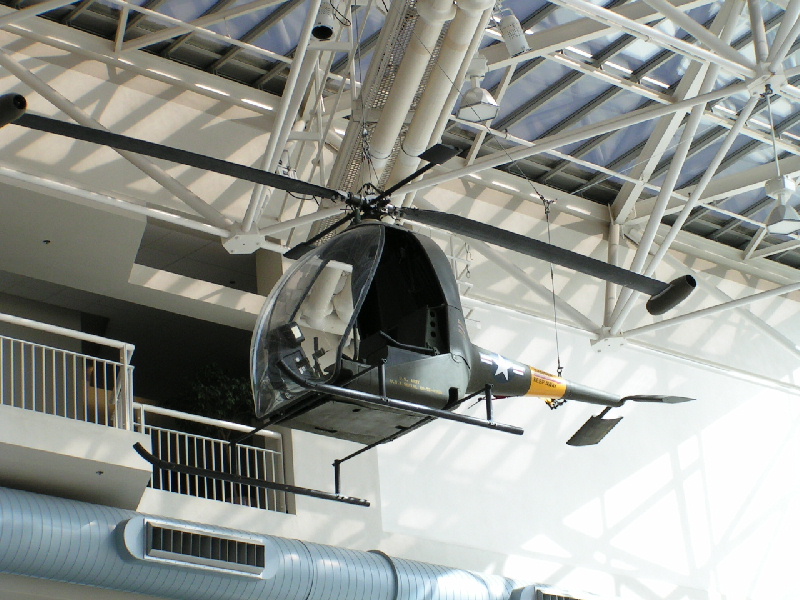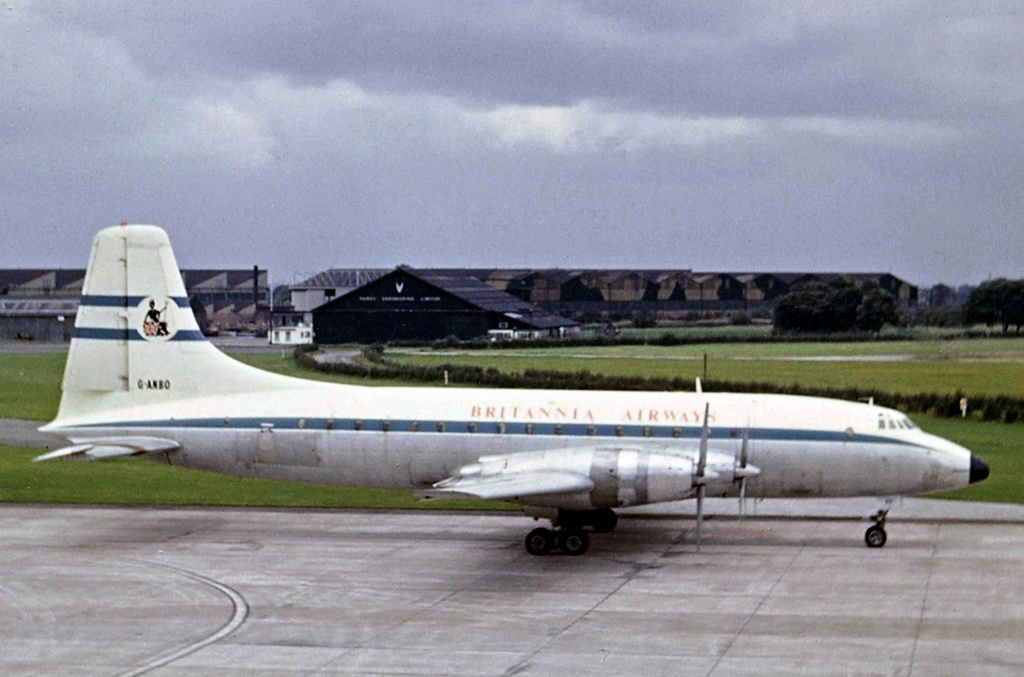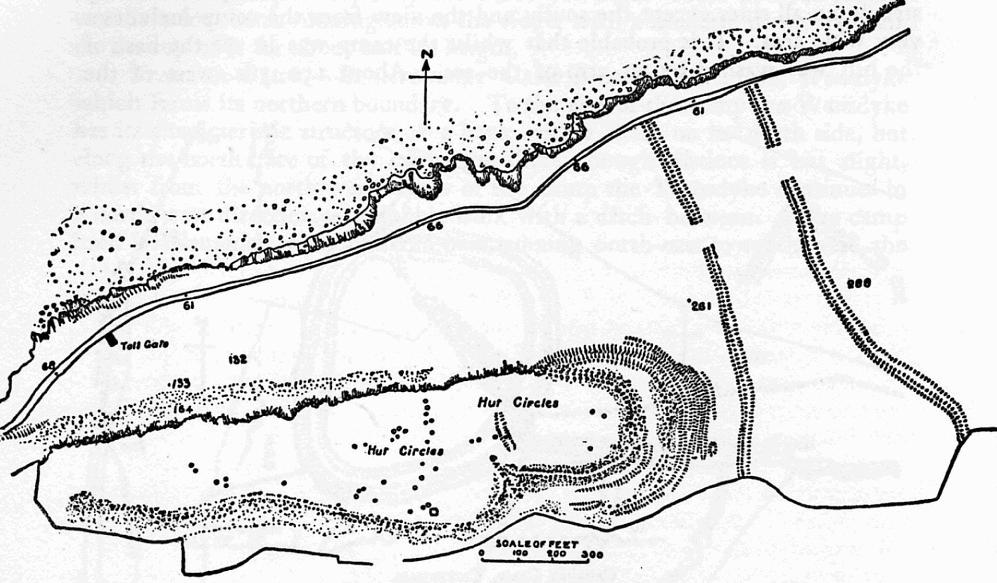|
Napier Eland
The Napier Eland was a British turboshaft or turboprop gas-turbine engine built by Napier & Son in the early 1950s. Production of the Eland ceased in 1961 when the Napier company was taken over by Rolls-Royce. Design and development The Eland was first tested in 1953 in a Vickers Varsity aircraft. Further flight proving was carried out from 1955 using the first production Airspeed Ambassador 2. The Eland was dropped from production when Napiers was acquired by Rolls-Royce Limited in 1961. The Eland was used to power various aircraft including the Westland Westminster heavy-lift helicopter, the Canadair CL-66; a turbine-powered version of the Convair CV-340 for the Canadian military(later converted to Allison T-56 propjets after a number of engine failures), and the Fairey Rotodyne gyrodyne. In the Rotodyne, the Eland powered the tractor propellers for forward flight and a compressor, via a clutch and shaft arrangement, to feed the rotor tip-jets with compressed air for vert ... [...More Info...] [...Related Items...] OR: [Wikipedia] [Google] [Baidu] |
WikiProject Aircraft
A WikiProject, or Wikiproject, is a Wikimedia movement affinity group for contributors with shared goals. WikiProjects are prevalent within the largest wiki, Wikipedia, and exist to varying degrees within sister projects such as Wiktionary, Wikiquote, Wikidata, and Wikisource. They also exist in different languages, and translation of articles is a form of their collaboration. During the COVID-19 pandemic, CBS News noted the role of Wikipedia's WikiProject Medicine in maintaining the accuracy of articles related to the disease. Another WikiProject that has drawn attention is WikiProject Women Scientists, which was profiled by '' Smithsonian'' for its efforts to improve coverage of women scientists which the profile noted had "helped increase the number of female scientists on Wikipedia from around 1,600 to over 5,000". On Wikipedia Some Wikipedia WikiProjects are substantial enough to engage in cooperative activities with outside organizations relevant to the field at issue. For e ... [...More Info...] [...Related Items...] OR: [Wikipedia] [Google] [Baidu] |
Tip Jet
A tip jet is a jet nozzle at the tip of some helicopter rotor blades, used to spin the rotor, much like a Catherine wheel firework. Tip jets replace the normal shaft drive and have the advantage of placing no torque on the airframe, thus not requiring the presence of a tail rotor. Some simple monocopters are composed of nothing but a single blade with a tip rocket. Tip jets can use compressed air, provided by a separate engine, to create jet thrust. Other types use a system that functions similarly to the afterburner (reheat) on a conventional jet engine, except that instead of reheating a gas jet, they serve as the primary heater, creating greater thrust than the flow of pre-compressed air alone; the best description of this is ''thrust augmentation''. Other designs includes ramjets or even a complete turbojet engine. Some, known as Rocket On Rotor systems, involve placing rockets on the tips of the rotor blades that are fueled from an onboard fuel tank. If the helicopter's ... [...More Info...] [...Related Items...] OR: [Wikipedia] [Google] [Baidu] |
Rolls-Royce Tyne
The Rolls-Royce RB.109 Tyne is a twin-shaft turboprop engine developed in the mid to late 1950s by Rolls-Royce Limited to a requirement for the Vickers Vanguard airliner. It was first test flown during 1956 in the nose of a modified Avro Lincoln. Following company naming convention for gas turbine engines this turboprop design was named after the River Tyne. Design and development Designed in 1954 by a team under Lionel Haworth and intended as a more powerful alternative to the Dart, the RB.109 Tyne was initially designed for a power of 2,500 shp but when first run in April 1955 the engine far exceeded expectations and was soon being type-tested at 4,220 shp. The Tyne was developed primarily for the four-engined Vickers Vanguard airliner, the prototype first flying on 20 January 1959 equipped with four Tyne Mk.506 of 4,985 e.s.h.p. Production deliveries of the engine were made from mid-1959 onwards to power the 43 Vanguards delivered to British European Airways and Trans-Cana ... [...More Info...] [...Related Items...] OR: [Wikipedia] [Google] [Baidu] |
Lycoming T55
The Honeywell T55 (formerly Lycoming; company designation LTC-4) is a turboshaft engine used on American helicopters and fixed-wing aircraft (in turboprop form) since the 1950s, and in unlimited hydroplanes since the 1980s. Today, there have been more than 6,000 of these engines built. It is produced by Honeywell Aerospace, a division of Honeywell based in Phoenix, Arizona, and was originally designed by the Turbine Engine Division of Lycoming Engines in Stratford, Connecticut, as a scaled-up version of the smaller Lycoming T53. Both engines are now produced by Honeywell Aerospace, and the T55 serves as the engine on several major applications including the CH-47-Chinook, the Bell 309, and the Piper PA-48 Enforcer. The T55 also serves as the core of the Lycoming ALF 502 turbofan. Since the T55 was first developed, progressive increases in airflow, overall pressure ratio, and turbine inlet temperature have more than tripled the power output of the engine. Variants Civil and exp ... [...More Info...] [...Related Items...] OR: [Wikipedia] [Google] [Baidu] |
Ivchenko AI-20
The Ivchenko AI-20 is a Soviet turboprop engine developed by the Ivchenko design bureau in the 1950s. It has been built in large numbers, serving as the powerplant for both the Antonov An-12 transport and the Ilyushin Il-18 airliner. Design and development The AI-20 was the first gas turbine engine developed by the design bureau led by Aleksandr Ivchenko based at Zaporizhia, USSR, which had previously concentrated on small piston engines such as the Ivchenko AI-14 and AI-26 radials. It was designed as a prospective powerplant for the new, large Ilyushin Il-18 airliner and the Antonov An-10, to be powered by four turboprops, in competition with the Kuznetsov NK-4 engines. Both engines were tested on the preproduction batch of 20 Il-18s, but the Ivchenko engine was chosen for full production, possibly due to a crash caused by an inflight failure of an NK-4 engine, and possibly due to the desire for the engines of the Ukrainian An-10 to also be built in Ukraine. The Il-18B was po ... [...More Info...] [...Related Items...] OR: [Wikipedia] [Google] [Baidu] |
Bristol Proteus
The Bristol Proteus was the Bristol Engine Company's first mass-produced gas turbine engine design, a turboprop that delivered just over 4,000 hp (3,000 kW). The Proteus was a reverse-flow gas turbine. Because the second turbine drove no compressor stages, but only the propeller, this engine was classified as a free-turbine. It powered the Bristol Britannia airliner, small naval patrol craft, hovercraft and electrical generating sets. It was also used to power a land-speed record car, the Bluebird-Proteus CN7. After the merger of Bristol with Armstrong Siddeley the engine became the Bristol Siddeley Proteus, and later the Rolls-Royce Proteus. The Proteus was to have been superseded by the Bristol Orion which would have given a Britannia a 75% increase in power for cruising faster. Design and development The Proteus was to power a very large airliner for use after the war. Design work started in September 1944 with its free turbine and propeller gearbox based on th ... [...More Info...] [...Related Items...] OR: [Wikipedia] [Google] [Baidu] |
Allison T56
The Allison T56 is an American single-shaft, modular design military turboprop with a 14-stage axial flow compressor driven by a four-stage turbine. It was originally developed by the Allison Engine Company for the Lockheed C-130 Hercules transport entering production in 1954. It has been a Rolls-Royce product since 1995 when Allison was acquired by Rolls-Royce. The commercial version is designated 501-D. Over 18,000 engines have been produced since 1954, logging over 200 million flying hours. Design and development The T56 turboprop, evolved from Allison's previous T38 series, was first flown in the nose of a B-17 test-bed aircraft in 1954. One of the first flight-cleared YT-56 engines was installed in a C-130 nacelle on Lockheed's Super Constellation test aircraft in early 1954. Originally fitted to the Lockheed C-130 Hercules military transport aircraft, the T56 was also installed on the Lockheed P-3 Orion maritime patrol aircraft (MPA), Grumman E-2 Hawkeye airborne earl ... [...More Info...] [...Related Items...] OR: [Wikipedia] [Google] [Baidu] |
List Of Aircraft Engines
This is an alphabetical list of aircraft engines by manufacturer. 0–9 2si *2si 215 *2si 230 * 2si 430 * 2si 460 *2si 500 * 2si 540 * 2si 690 3W ''Source: RMV'' *3W 106iB2 *3W-110 *3W-112 *3W-170 *3W-210 *3W-220 A Abadal (Francisco Serramalera Abadal) *Abadal Y-12 350/400 hp ABC ''Source: Lumsden.'' * ABC 8 hp * ABC 30hp V-4 * ABC 45hp V-6 * ABC 60hp V-8 * ABC 85hp V-6 * ABC 100hp V-8 * ABC 115 hp * ABC 170hp V-12 * ABC 225hp V-16 *ABC Dragonfly *ABC Gadfly *ABC Gnat *ABC Hornet * ABC Mosquito *ABC Scorpion *ABC Wasp *ABC type 10 APU *ABC type 11 APU ABECO ''Source: RMV'' *ABECO GEM Aberg ''Source: RMV'' *Type Sklenar ABLE ''Source: RMV'', Able Experimental Aircraft Engine Co. (Able Experimental Aircraft Engine Co., Altimizer, Hoverhawk (US)) *ABLE 2275 *ABLE 2500 *ABLE VW x 2 Geared Drive Accurate Automation Corp *Accurate Automation AT-1500 *Accurate Automation AT-1700 Ace (Ace American Engr Corp, Horace Keane Aeroplane Co, North Beac ... [...More Info...] [...Related Items...] OR: [Wikipedia] [Google] [Baidu] |
Jet Fuel
Jet fuel or aviation turbine fuel (ATF, also abbreviated avtur) is a type of aviation fuel designed for use in aircraft powered by gas-turbine engines. It is colorless to straw-colored in appearance. The most commonly used fuels for commercial aviation are Jet A and Jet A-1, which are produced to a standardized international specification. The only other jet fuel commonly used in civilian turbine-engine powered aviation is Jet B, which is used for its enhanced cold-weather performance. Jet fuel is a mixture of a variety of hydrocarbons. Because the exact composition of jet fuel varies widely based on petroleum source, it is impossible to define jet fuel as a ratio of specific hydrocarbons. Jet fuel is therefore defined as a performance specification rather than a chemical compound. Furthermore, the range of molecular mass between hydrocarbons (or different carbon numbers) is defined by the requirements for the product, such as the freezing point or smoke point. Kerosene-type jet ... [...More Info...] [...Related Items...] OR: [Wikipedia] [Google] [Baidu] |
Weston-super-Mare
Weston-super-Mare, also known simply as Weston, is a seaside town in North Somerset, England. It lies by the Bristol Channel south-west of Bristol between Worlebury Hill and Bleadon Hill. It includes the suburbs of Mead Vale, Milton, Oldmixon, West Wick, Worlebury, Uphill and Worle. Its population at the 2011 census was 76,143. Since 1983, Weston has been twinned with Hildesheim in Germany. The local area has been occupied since the Iron Age. It was still a small village until the 19th century when it developed as a seaside resort. A railway station and two piers were built. In the second half of the 20th century it was connected to the M5 motorway but the number of people holidaying in the town declined and some local industries closed, although the number of day visitors has risen. Attractions include The Helicopter Museum, Weston Museum, and the Grand Pier. Cultural venues include The Playhouse, the Winter Gardens and the Blakehay Theatre. The Bristol Channel has a l ... [...More Info...] [...Related Items...] OR: [Wikipedia] [Google] [Baidu] |
The Helicopter Museum (Weston)
The Helicopter Museum in Weston-super-Mare, North Somerset, England, is a museum featuring a collection of more than 80 helicopters and autogyros from around the world, both civilian and military. It is based at the southeastern corner of the former Weston-super-Mare Airport. History The museum originated in 1958 when its founder, aviation writer and historian Elfan ap Rees, began to build up a private collection of rotorcraft documentation and artefacts. Over the next ten years his collection grew and in 1969 he acquired his first complete helicopter, a Bristol Sycamore Mk.3. In 1974, ap Rees purchased a Bristol Belvedere and formed a volunteer group to restore it. In December 1976, an ex Royal Navy Westland Whirlwind HAS Mk.7 was acquired and added to the collection. In 1977 and 1978, more aircraft were added, including an ex Royal Air Force Bristol Sycamore HC Mk.14 and several rare prototypes: the Fairey Ultra-Light tip-jet driven helicopter, the Thruxton Gadfly HDW.1 tw ... [...More Info...] [...Related Items...] OR: [Wikipedia] [Google] [Baidu] |






